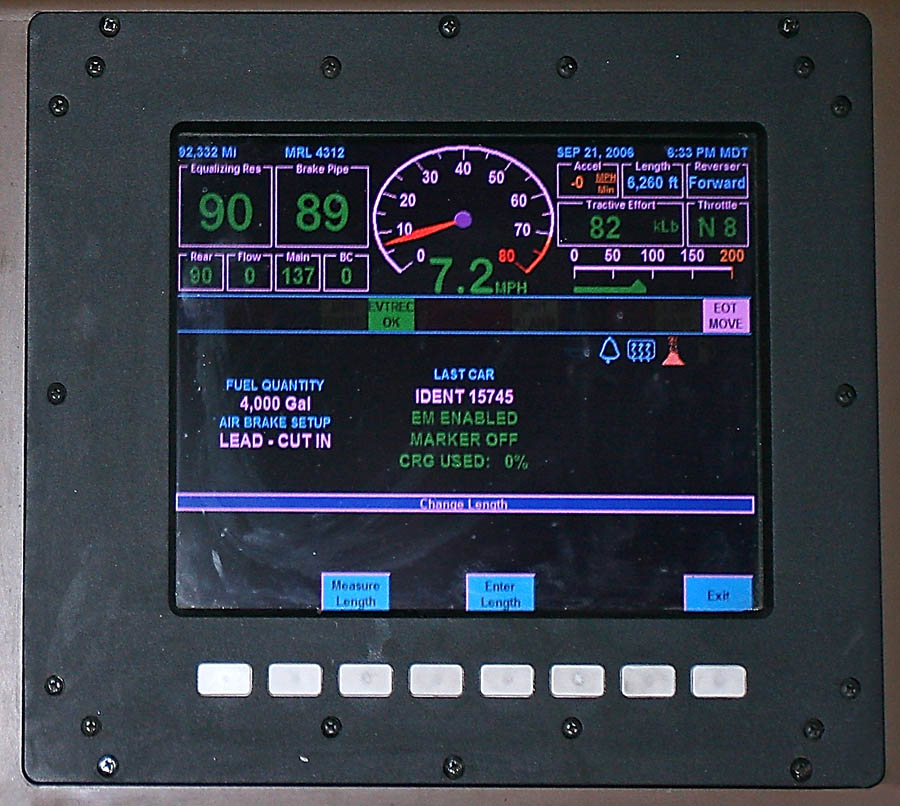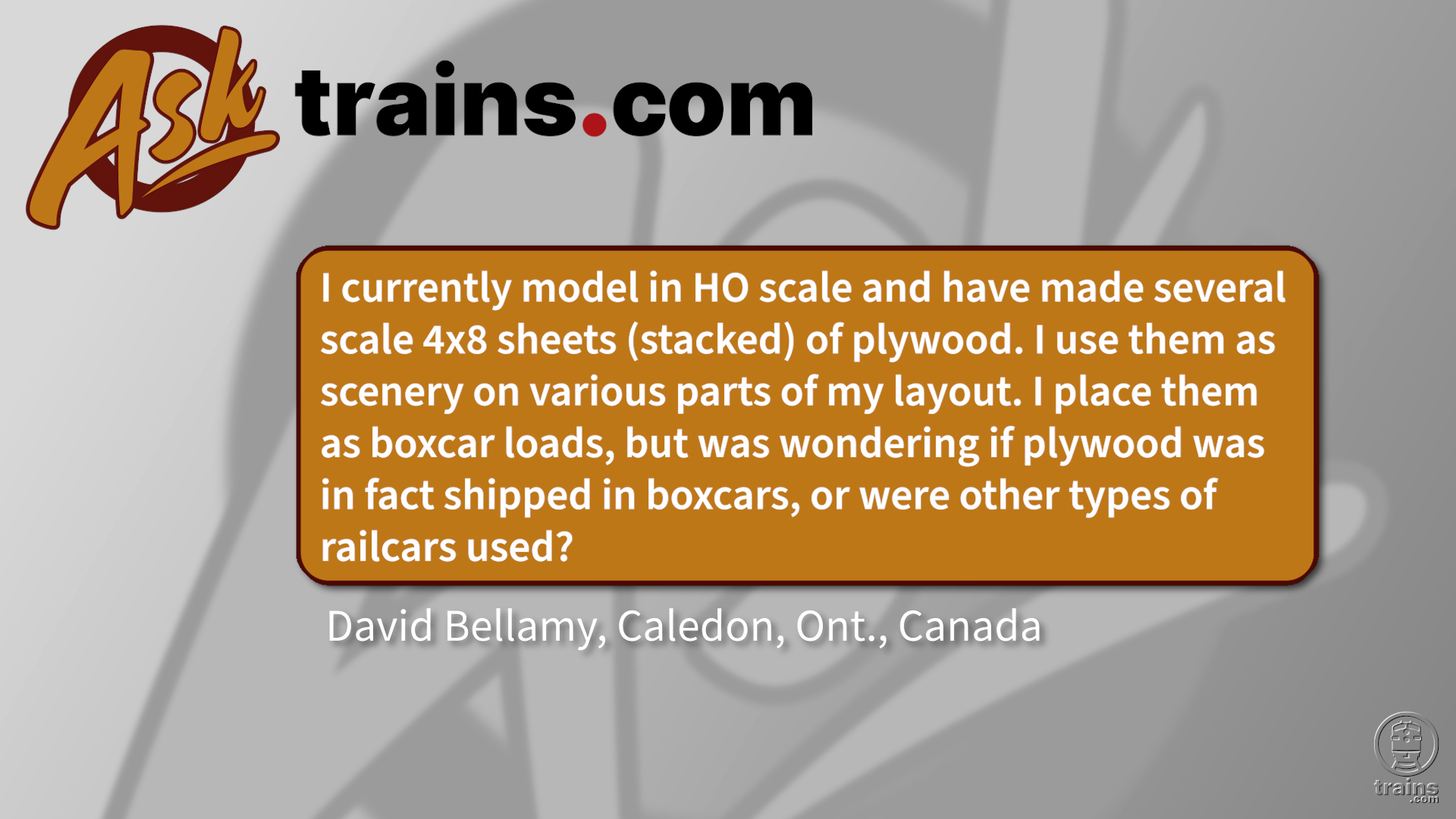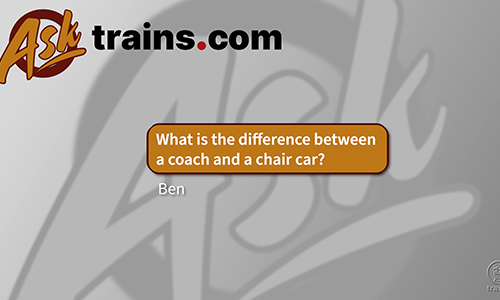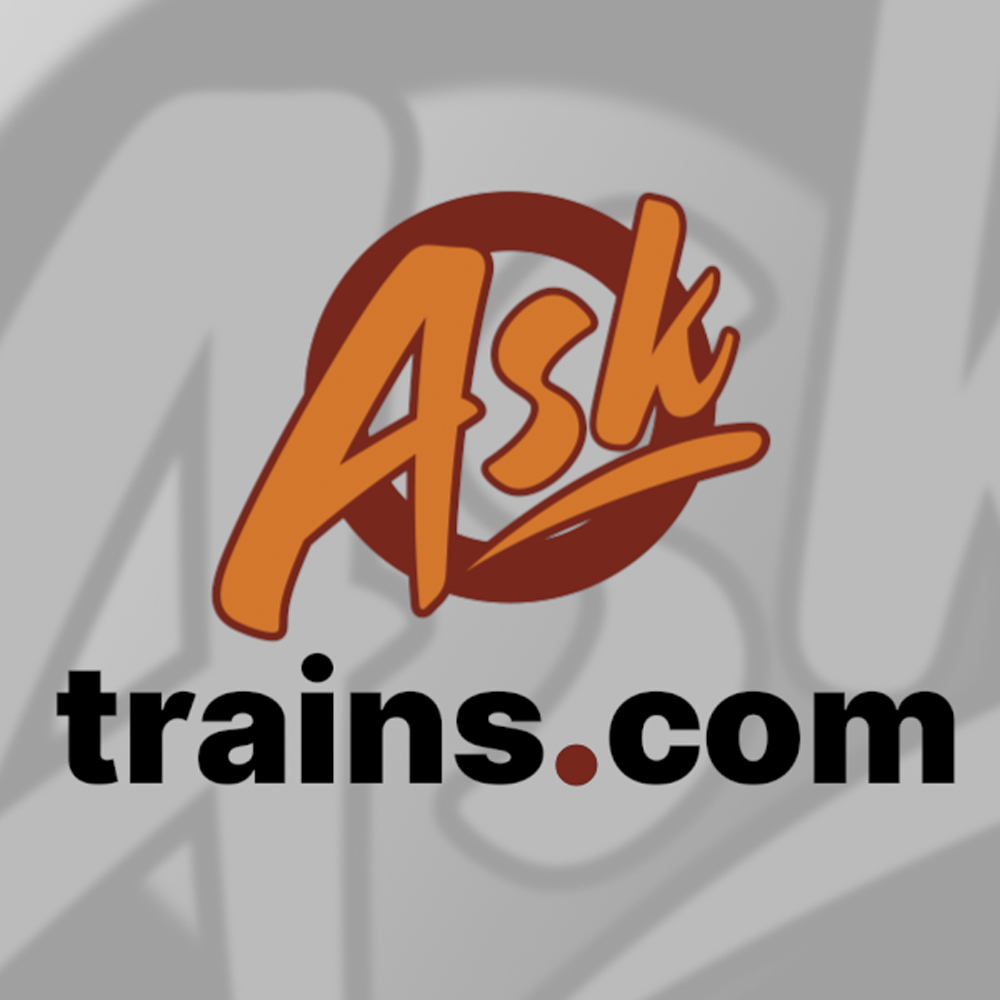A Railroaders employ a device known as a “distance counter” to measure feet covered by the train to determine if it has cleared a switch or speed restriction, for example. Nearly every mainline locomotive operating today has a distance counter. The devices tend to take on two common forms, although many variations are in use. On modern computer-controlled locomotives, the distance counter is a button on the engineer’s display that will count the feet of track covered from the time it is activated. They will generally count up from zero, down from a preset length, or do both. The ones that will do both, count up or down, are shown as a choice the engineer makes when setting the locomotive up for that trip. Some locomotives will only count down from a preset length. For example, when a train has to clear the main line at Waukesha, Wis., the location of a short passing siding, on a northbound train, the engineer starts the distance counter just past the signal on the siding that governs the south end of the siding. That is the “clearance point” that the train needs to be past to enable the opposing train to pass safely. When the distance counter shows the train is in the clear, the engineer stops the train and awaits the meet. On older locomotives without computer controls, an analog distance counter is located in the end-of-train receiver box in the cab that also shows brake pipe pressure on the train’s rear end. – Ray Weart, locomotive engineer
Tracking train lengths
| Last updated on November 3, 2020
Ask Trains from the December 2015 issue














They had a caboose with a crew on it. They notified the engineer by radio when they were in the clear.
That crew member who got on the train from a van was probably throwing a switch and/or a derail at the back of the train to restore the main track. The engineer stops to wait for the van to bring the conductor back to the head end. Why can’t they walk? Well, trains are often 10,000 feet long. I’ve seen them as long as 16,000 feet – that’s 3 miles.
Do THEY call the dispatcher to see when a train is due ??
my question is how does the dispatcher know when the train cleared a cross over track from coming out on the main line from a siding track , see it all the time at the railex facilty in Rotterdam NY . the two or three U.P. engines come out from the siding cross over another set of tracks to head west and stop, near the train crossing with the rest of the train still blocking the east bound track and the rest of the cars still on the siding. FYI the train stops their to wait for another crew member to board the engine from a transport van ,still don,t understand why he isn,t on the train at the railex facilty from the start ,
Computers and distance counters aside, how did they do it in the earlier days of steam before radios?
The conductor and engineer know (are told) the train length when they take control of the train.
In the early days of steam a chain of train men passed information along the length of the train using hand signals.
I have my doubts about how well those work. I have seen a UP train go down the tracks & come to a stop leaving the last 3 cars blocking the crossing. I called the UP office number listed on the crossing box. There were about 12 +/- of us that could not get across to go to work that morning as it was blocked just over 30 minutes. I asked her if they could reach the engineer & check to see if there was a medical problem or did they both nod off or what. I told the lady we have had it with waiting & advised her I was going to hike about a mile & tell the engineer he was blocking the crossing with the last 3 cars of the train. She said I could not trespass – (yeah right) by the time I had hiked a bout a quarter of a mile the train started moving. I was lucky and made it to work with about 1 minute to spare that morning. My opinion is they need a more accurate car counter.
But how does the train length itself get calculated, and how does the operating crew get that number?